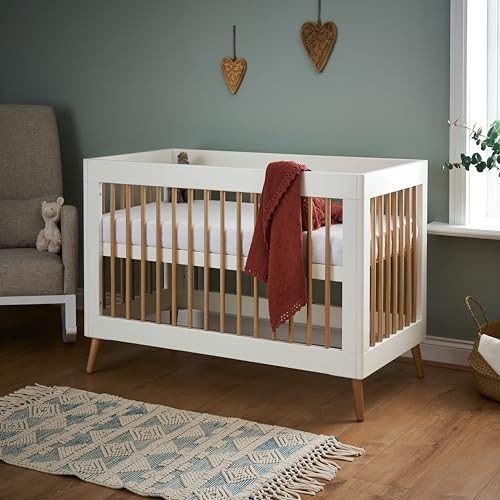5 Killer Quora Answers To Tots And Cots
페이지 정보

본문
Tots and Cots: A Comprehensive Guide for Parents
When it concerns ensuring a safe and comfortable sleeping environment for babies and toddlers, the choices parents make-- ranging from cribs to cots-- can substantially affect their well-being. Today's short article dives deep into the intricacies of selecting the best sleeping plans for tots, highlighting safety, style, performance, and how these options evolve as a kid grows.
Comprehending Tots and Cots
tots And cots usually describe children, especially young children aged between 1 to 3 years, while cots are the sleeping plans specifically created for babies and young children. The appropriate sleeping devices for this age consists of various kinds of cots, cribs, and young child beds.

Kinds of Cots
Numerous styles exist to satisfy the diverse requirements of both moms and dads and children. Below is a list outlining the most typical kinds of cots offered:
Standard Crib
- A conventional crib is designed for babies and typically includes sides that can be gotten used to different heights.
Convertible Crib
- This type of crib can convert into a young child bed, daybed, or full-sized bed as the child grows, making it a long-lasting financial investment.
Portable Crib
- Likewise called travel cots, these are light-weight and easily collapsible, ideal for traveling or smaller sized home.
Co-Sleeper
- A co-sleeper crib attaches to the side of the parents' bed, permitting simple gain access to while ensuring the baby has a separate and safe sleeping area.
Toddler Bed
- A toddler bed is a little bed that resembles a standard bed but is developed particularly for young children, generally featuring safety rails.
Mini Crib
- Mini cribs are smaller than basic cribs, making them a great option for tight areas, however they appropriate for infants just.
Safety Considerations
Making sure safety is paramount when picking a cot for a kid. Here are critical safety guidelines moms and dads ought to consider:
- Check for CPSC Certification: Ensure that the cot sticks to the Consumer Product Safety Commission (CPSC) requirements.
- Prevent Drop-Sides: Cots with drop-sides have actually been connected to safety risks, and the most current security guidelines restrict them.
- Utilize a Firm Mattress: A firm mattress reduces the risk of suffocation and ought to fit comfortably within the cot.
- Keep Bedding Simple: Use a fitted sheet and avoid pillows, comforters, and stuffed animals that can posture suffocation risks.
- Follow Weight and Age Guidelines: Ensure the kid has actually not gone beyond the cot's weight limit and is still within the recommended age.
Transitioning from a Cot to a Toddler Bed
The transition from a cot to a toddler bed can be an emotional milestone for both moms and dads and kids. Here are actions to reduce the transition:
Timing
Deciding when to shift can be subjective, but it's typically suggested to make the switch between 18 months and 3 years, based upon aspects like:
- Physical Ability: If the kid is climbing up out of the cot.
- Potty Training: Consider transitioning if the kid is toilet training and requires much easier access.
- Behavior: Exhibiting indications of maturity, such as following guidelines or revealing a desire for independence.
Tips for Making the Transition Smooth
Include Your Child: Let the child select their brand-new bed linen or bed design to impart excitement about the change.
Keep Routine Consistent: Maintain the child's bedtime regimen to provide comfort throughout this period of change.
Explain the Change: Discuss the transition to a toddler bed favorably, making it seem like an excellent adventure.
Precaution: Place the bed against the wall or use bed rails to avoid falling during sleep.
Picking the Right Bed
When choosing a young child bed, parents need to think about aspects like:
- Height: Low-profile beds are perfect for toddlers who may fall out throughout sleep.
- Durability: Ensure the bed can hold up against active play along with sleep.
- Style and Design: Choose a design that matches the kid's room and is appealing to the kid.
Picking the right cot for your child can be a daunting process, but understanding the alternatives available, crucial security considerations, and the ideal timing for transitioning to a young child bed can make this journey much easier for parents. Investing time and effort into these decisions will guarantee that your child has a safe, comfy, and supporting sleep environment.
Frequently asked questions
1. What is the difference between a cot and a crib?
- A cot is normally a smaller bed designed for more youthful toddlers, while a crib is a bigger bed that is generally appropriate for babies as much as 3 years old.
2. When should I move my child from a crib to a young child bed?
- The shift time is generally in between 18 months and 3 years; this modification is based on the child's physical capabilities and behavioral signs.
3. How can I guarantee my kid is safe while sleeping?
- Always comply with safety requirements, utilize a firm mattress with a basic bedding arrangement, and monitor the cot's weight limitation.
4. What should I do if my kid attempts to climb up out of the cot?
- If your kid is climbing out, it may be time to consider transitioning to a young child bed to avoid falls.
5. Can I use the exact same mattress when transitioning?
- Usually, it is best to replace the crib mattress with one that is specific to the toddler bed. Guarantee it fits comfortably and sticks to security standards.
By considering these elements, parents can model healthy sleep routines and offer their children with a safe environment that promotes restful sleep. Purchasing quality sleeping plans will contribute to the child's general development and joy.

- 이전글How To Save Money On B197 Abroad 25.08.16
- 다음글The 10 Scariest Things About Back Door Installation Reviews 25.08.16
댓글목록
등록된 댓글이 없습니다.
